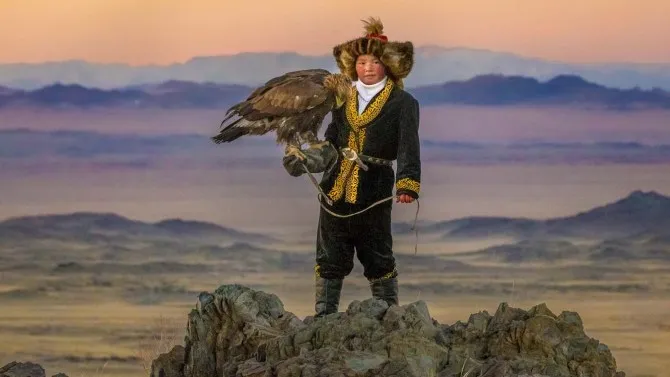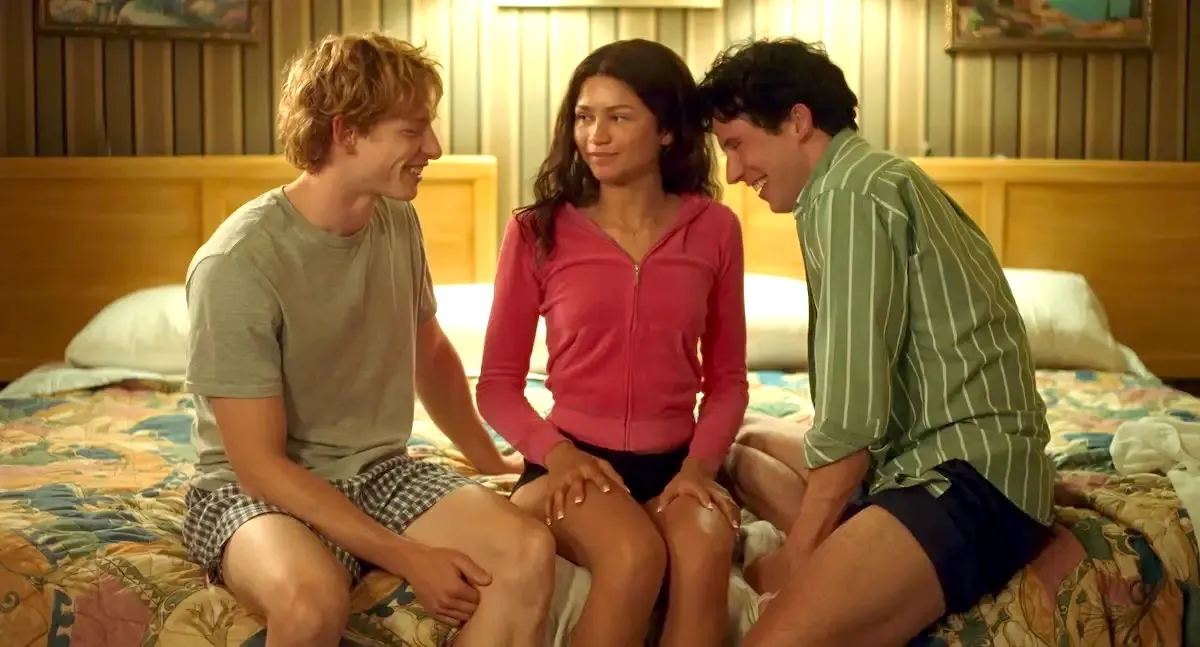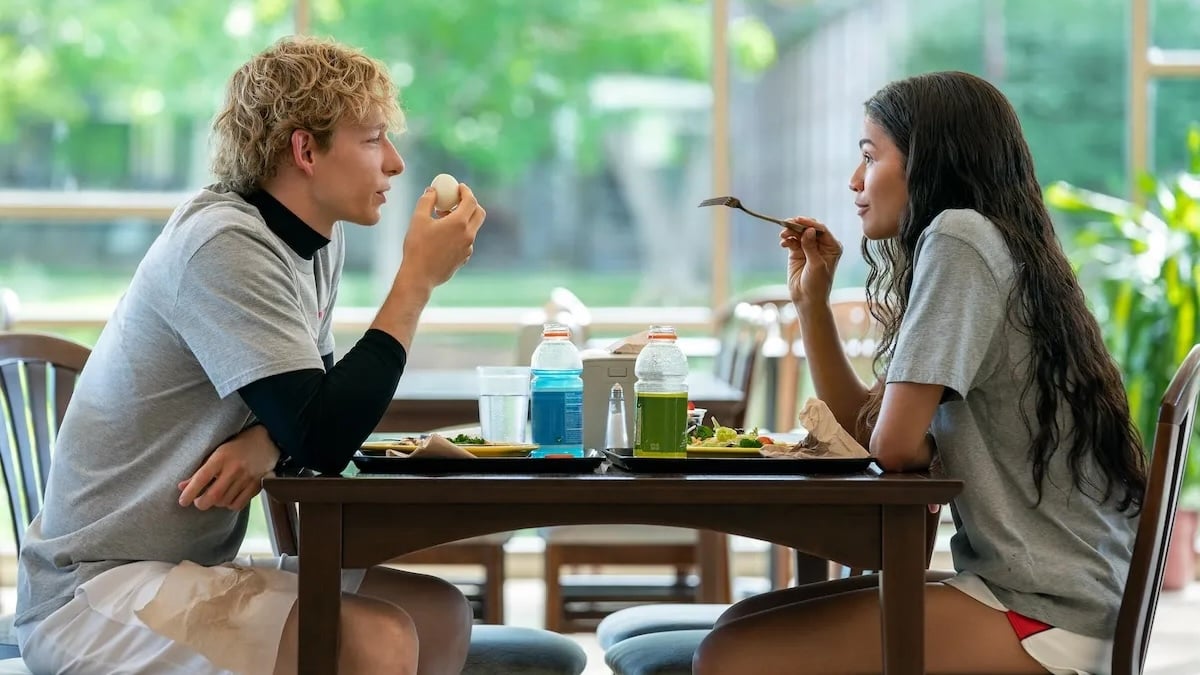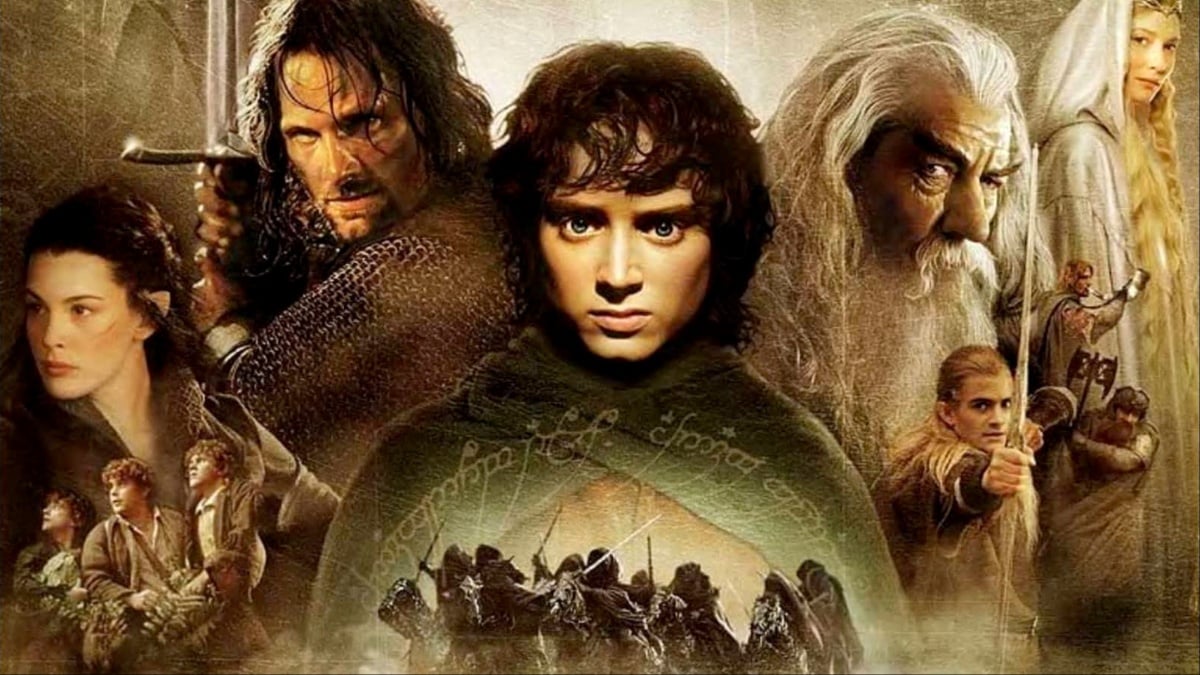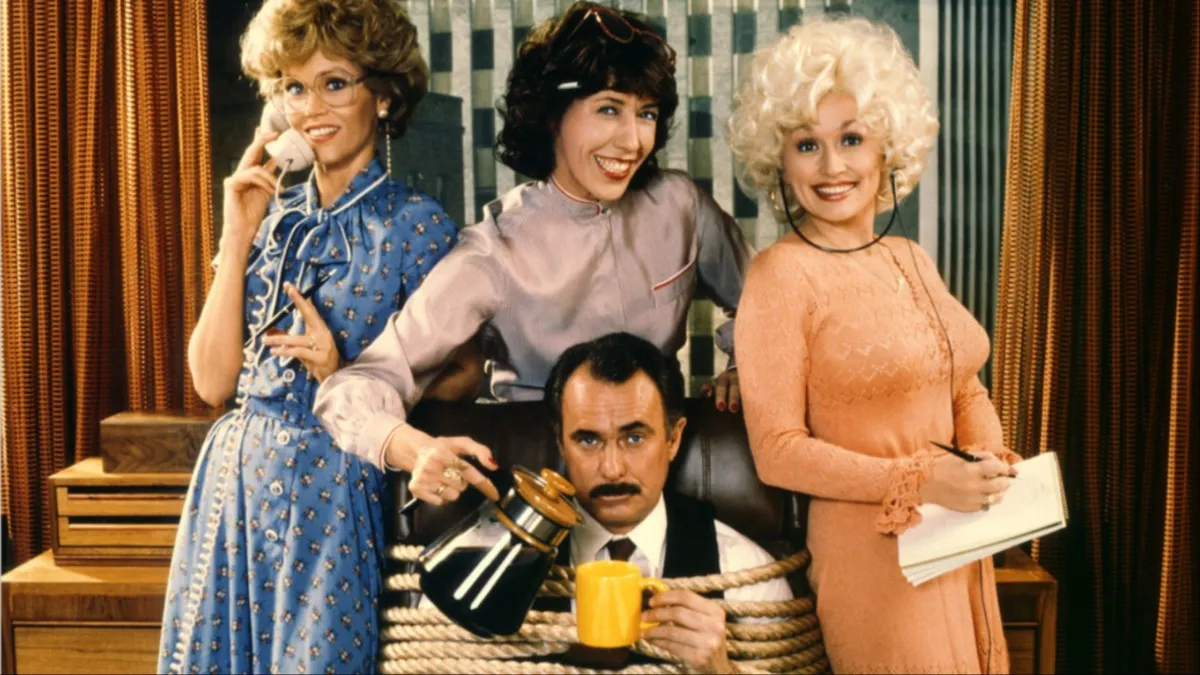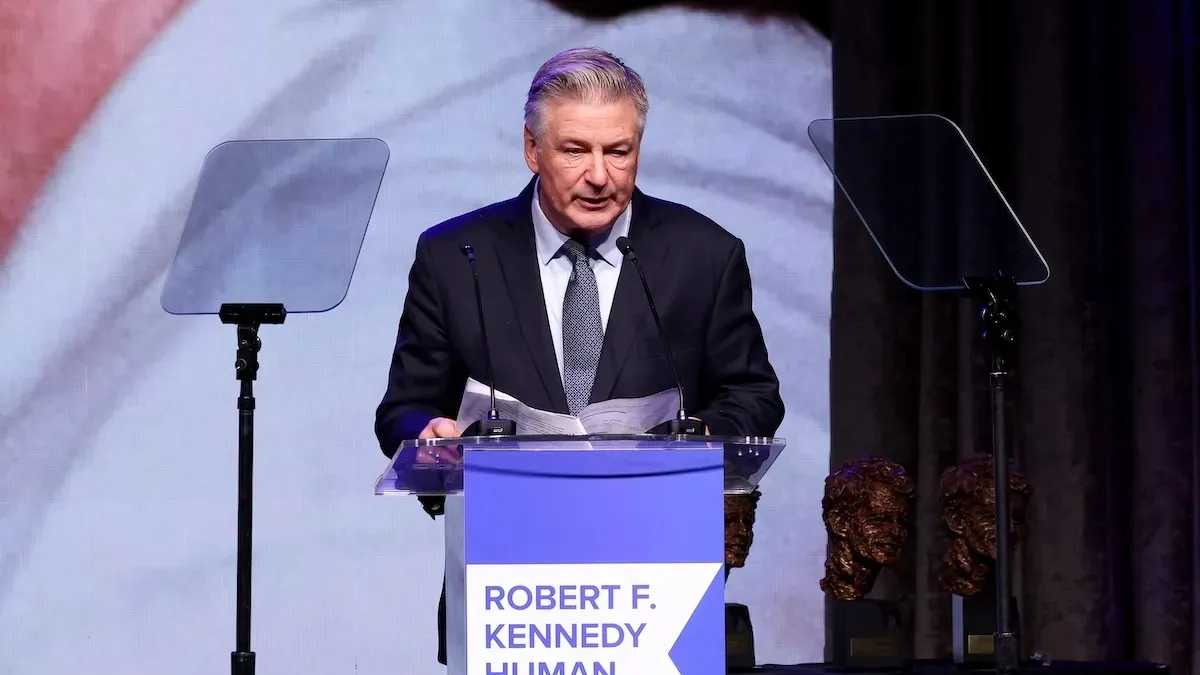The Eagle Huntress inspired many when it came out last year, as it told the story of 13-year-old Aisholpan on her quest to become an eagle huntress, much to the disapproval of the older male hunters. The young protagonist’s fearlessness, determination, and progress is a gripping journey that director Otto Bell portrays with suspense, heart, and curiosity.
I had the chance to talk to Bell about bearing the harsh environmental conditions, the support the film received from executive producers Morgan Spurlock and Daisy Ridley, and what Aisholpan is up to these days.
TMS (Charline): I feel like with documentary, there are always surprises and it’s hard to know what the final product will be until you’re actually done. Was that the case with Eagle Huntress?
Otto Bell: Yeah, very true, very much so. I didn’t know if it was going to be like a Youtube clip, a few minutes, or if it was going to be a half-hour or an hour. Things just kept on happening to Aisholpan. So yeah, I definitely didn’t have a map. I did have a compass—I did know some stuff. Like I knew that she was determined to be a full eagle hunter and I knew that there were certain steps, which her family and the community explained to me, that she would have to go through in order to achieve that status, to kind of graduate to full eagle hunter. She would have to capture her own bird, and then she’d have to train it, and then she’d have to prove she built a bond with it, oftentimes there’s a festival, and then lastly she’d have to hunt successfully with her bird in winter.
So I knew if she was to go all the way that there’d be certain steps involved, but no, I certainly didn’t know—there was no way to know that she would "> Things kept unfolding things kept happening to her and that’s why I think it sustains feature-length treatment.
TMS: You got a really intimate look into her family and also her community. Was that access challenging at all?
Bell: Depends on which part you’re talking about, so her family and the school and Aisholpan’s friends, and stuff like that, they were all really welcoming and warm. I think that’s part of the nomadic culture, is it’s so sparsely populated out there and remote, so it’s part of that culture to welcome guests and to feed them and to sit down and embrace and then sort of chat with them. It’s very warm and welcoming place.
The men, the elders who initially didn’t believe in Aisholpan, they were pretty easy to talk to as well. They’re used to sort of adventurous tourists and kind of intrepid photographers coming up and finding them and showing an interest in their lives and taking photographs and stuff like that, even filming them in some cases. So it was all, I didn’t struggle massively with access, no.
TMS: Did you expect that you’d get so many big names supporting your documentary?
Bell: No. [laughs] No, I didn’t. No way, not when we were going. I knew that the story was special, it was the first afternoon we started filming that Aisholpan stole the bird out of the nest. We filmed that in one take, that is one 12-minute single take. So, we just filmed it from 3 different angles. That’s how we got the coverage.
TMS: That must have been really tense.
Bell: Yeah, somewhat, but I’ve learned all the technical stuff over 10 years doing commercials and filming live sports events. So, I knew I was going to capture it, but over those 12 minutes—watching her climb down that mountain to steal that bird over there—I knew we had something special. I thought, you know, you don’t see this every day. But then, that doesn’t necessarily translate into lots of important, influential people being interested in your project which, luckily, people were. It kind of snowballed, really.
I showed Morgan Spurlock that 12-minute piece of footage, and that’s when he came on board immediately, said, “How can I help you? I want to help you finish this film.” Cause I was out of money when I turned to Morgan, I was actually in debt. I was worse than out of money. So he came on board and when we finished the film Daisy Ridley came on board, he got in touch with her manager, so it kept snowballing as the story got bigger and bigger.
People were just kind and came on board and literally each of those people were like, “This is amazing, how can I help?” So it’s quite validating. Having those people come on board, especially before we got it out to audiences. It looks like we might break about $3 million dollars at the U.S. box office.
TMS: Congrats!
Bell: Yeah, I know it’s great! I mean, it’s great that that many young girls and boys have seen this film. I mean, for a lot of them it’s the first documentary, first foreign documentary that they’ve ever seen in cinemas so that’s a really good feeling, you know? It’s great that more people keep joining the film in a way.
TMS: Speaking of Daisy Ridley, how did you choose when to use her narrative voice and when to let the story kind of unfold by itself?
Bell: Daisy came on board as an executive producer the night before our Sundance premiere, this time last year, roughly. And in the version I showed at Sundance, I had some text cards in the film—just at the start which kind of explains where we are and helps orientate the audience a little bit. So when I was speaking to Daisy the night before Sundance, I was thinking she had a really good voice and wondered if she could maybe in addition to being executive producer—and this was just me talking to myself—I was wondering if she would be up for doing a bit of narration, just at the front instead of those cards, because I had some really big aerials that I wanted to use at the top to kind of bring you into the world of this region and then she agreed to replace those.
And I thought, “You know, there’s probably also a few other bits in the film which might be good.” So it’s a total of 5 minutes of narration in an 87 minute film, but where Daisy does pop up the rationale is that she lowers the entry age to the film, because I think you’ve got to be about 15, 14 to keep up with all those subtitles, but now with Daisy just explaining and chiming in at key moments to help people sort of understand what’s going on I think you can, well, I know those 10 or 11 can go to the cinema and keep up with the film, just because she provides little hand-holds at pivotal moments to help explain what’s going on.
TMS: Were you consciously trying to make the film more accessible to younger viewers?
Bell: Not really, no. I wasn’t, I think that’s the way it just turned out. I didn’t set out to make a kid’s documentary film, I think that’s just who the end result ended up speaking to. I know that parents and grandparents are really enjoying it as well, and I think also the fact that it’s about a dad and a daughter—that’s a pretty universal theme. I didn’t set out to make an R-rated film [laughs] but no, I didn’t deliberately set out to make a documentary for kids and I don’t think it is a documentary just for kids either.
TMS: Do you have a favorite moment in the documentary?
Bell: I like the packing up, the summer home and putting it on the back of a trailer and driving to their winter home. It’s like a little love letter to nomadic culture.
TMS: And we saw how devastating a lot of the conditions could be. How did you go about capturing the footage in the tundra and all those other moments?
Bell: It took a long time because it’s very hard, when you’re working with children and wild animals you don’t really get the chance to sort of, direct, in the traditional sense. You don’t get multiple takes, you don’t get a chance to do things twice. So everything just takes a lot longer and it was hard not to freeze out there for that final arc, you know? Which is just really, really painfully cold. Everything takes three or four times as long. I think we set aside 5-8 days for the final act and it ended up taking about 22 days.
TMS: What has the reception been like?
Bell: It’s been wonderful. Aisholpan is really going on to great things, she got a scholarship to a really good school in Mongolia off the back of the film and she’s been doing really well she’s learned Turkish, her English has really improved. With all of the commercial success of the film, we made the family profit participants in the film when the film really started to take off so we set up a fund for Aisholpan’s education because she wants to be a doctor—she wants to be a surgeon. I’m very happy to say that she can now afford whatever she wants to do in the world. It’s a really nice benefit to the film for her.
TMS: That’s amazing.
Bell: It’s overwhelming how many people are coming out to see, in cinemas as well, it’s wonderful.
TMS: The intro, like you say, with the narration is a really great way to enter that environment and to be introduced to it. I was curious about how that came about and why you thought beginning the film with the release of an eagle was the way to go.
Bell: Well, I’ve wanted to, you know, so much of the structure of this film was kind of out of my control. It was almost pre-determined, so much of the structure of the film like I was saying—the pre-determined steps to becoming an eagle huntress, or an eagle hunter. The beginning was really a place to play, a place where I could actually have an impact on the structure of the story.
I wanted to start with the sacrifice and the release for a number of reasons. Number one, I wanted to alert people to the fact that this is a harsh world where there is blood and where people kind of live hand to mouth, and then number two I wanted to recognize the reverence with which these people treat the birds right up front. So I didn’t want people wondering, “Wait, so they take these bird out of the nest and then they hold on to them? They keep them forever? That seems a bit…” I wanted to point out that they release them after 7 years back to nature to continue the circle of life, over hundreds, thousands of years these people have worked out that it’s around the age 7 that a golden eagle hits maturity and is capable of breeding, and that’s the time in which they release them back to nature.
So I liked recognizing the fact that they treat these birds with great respect, in fact that sacrifice scene in Kazakh culture, now Aisholpan and her family are Mongolian but they’re part of a Kazakh minority, and in Kazakh culture when a relative, when an important family member dies or emigrates to a different country—some kind of major event like that—they kill a sheep and they feast on the sheep. So, that’s not just an empty sacrifice that’s a sign of respect that they’re treating that bird almost as they’d treat a departing family member. So I wanted to get that across, and I like the idea of an old man giving away his bird right before we meet a young girl who’s finding her bird, I thought there’s a nice circularity to that structure.
TMS: Especially since it also ends with Aisholpan on her first hunting trip.
Bell: Exactly, yeah.
TMS: Do you feel like there’s an overlying message you want people to take away from the documentary?
Bell: Just that, to be determined and to be focused on what it is that you want to achieve. and don’t let anybody tell you that you can’t achieve it. Keep going at something until you finish it.
TMS: Did you feel a strong sense of responsibility when you were making this documentary, not just to do Aisholpan justice but also to portray the culture?
Bell: Absolutely, I mean I don’t know about taking on responsibility for an entire culture—I don’t think I would be brave enough to do that. I certainly felt a sense of responsibility to finish the film for Aisholpan and her family. I wanted the world to hear her story, and I captured all these amazing moments. Yeah, I felt it was important I finish the film and get it out there so that people could enjoy that story, so yeah I did feel a sense of responsibility to her. In terms of representing an entire culture I didn’t take that much on my shoulder.
The Eagle Huntress is out on Blu-ray, DVD & Digital on 2/7, and it’s definitely worth it!
Want more stories like this? Become a subscriber and support the site!
—The Mary Sue has a strict comment policy that forbids, but is not limited to, personal insults toward anyone, hate speech, and trolling.—
Follow The Mary Sue on Twitter, Facebook, Tumblr, Pinterest, & Google+.



